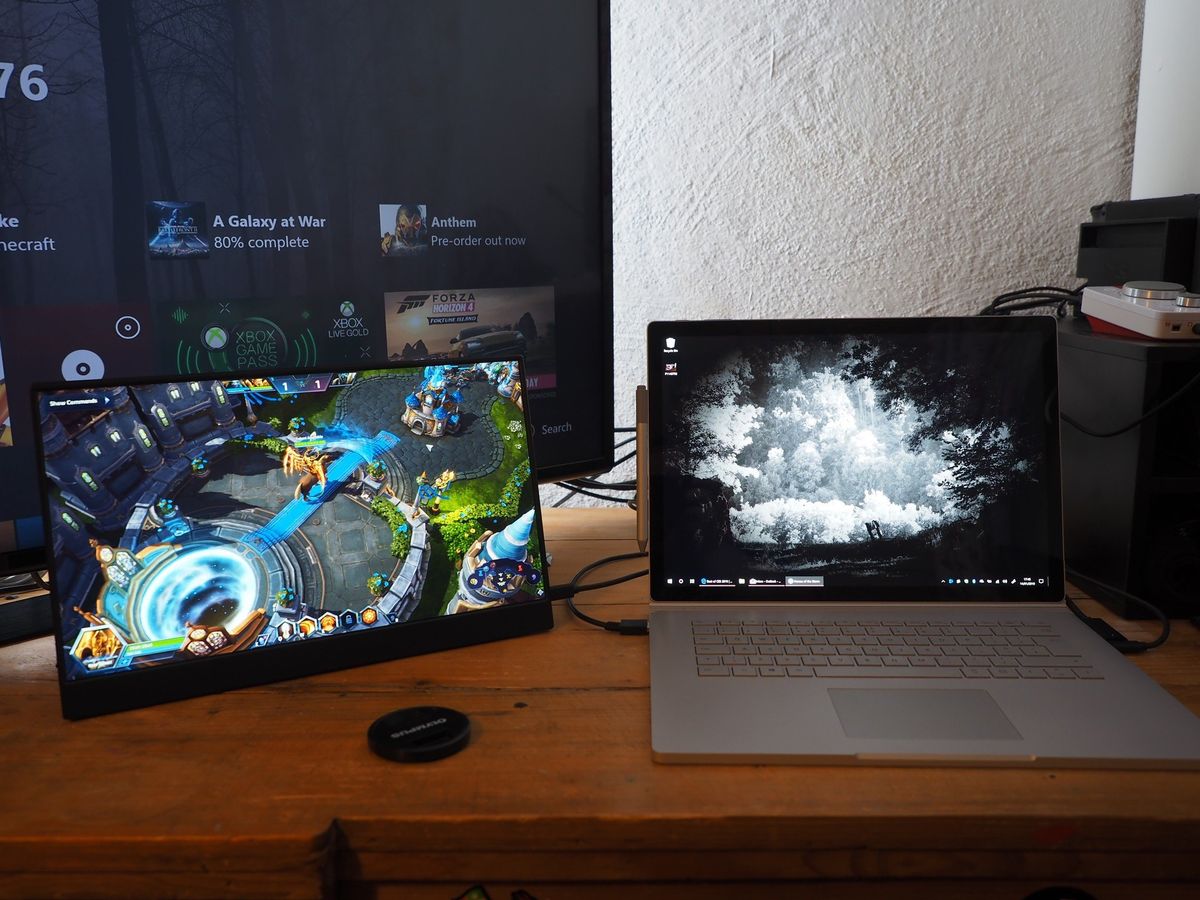Vinpok makes a range of high-quality accessories, but they're typically things like phone cases and laptop stands judging by the company's website. The Vinpok Split is a crowdfunded product, representing the company's first foray into display technology.
The Vinpok Split has its sights set on bringing some portability to the display market. Complete with an integrated cover stand and modern ports, you can use this display with video game consoles, work space-supporting phones like the Samsung Galaxy Note 9 (RIP Windows 10 Mobile Continuum), and of course, laptops.
The Vinpok Split monitor supports power and data over USB-C, allowing devices like the Surface Book 2 to gain some extra screen real estate on a single port. Just how good is it in practice though? Here's our review.
On-the-go display
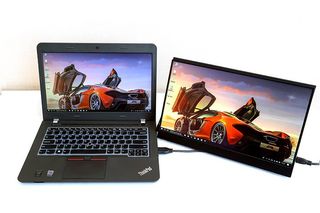
Vinpok Split
Bottom line: Vinpok's Split external screen nails the fundamentals of portability and display tech in a single package.
Pros:
- Bright with solid color reproduction
- Slim bezels
- Super light and portable
Cons:
- Viewing angles aren't great
- Kickstand cover could use improvements
- Touch response isn't the best
- Quite pricey
What I love about the Vinpok Split
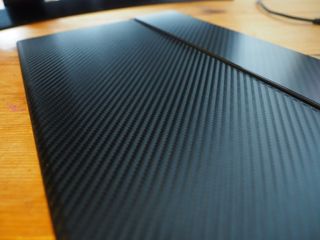
The Vinpok Split is a surprisingly versatile display with a solid list of specfications. Wafer-thin bezels grant this device some impressive screen-to-body display ratio. When you combine that with a 4.4mm thickness and a weight of just 625 grams (!!!), you're pretty much ensuring that all of the bag space this display takes up is indeed, used for its intended purpose.
| Category | Spec |
|---|---|
| Screen type | IPS, 15.6 inches |
| Contrast ratio | 1000:1 |
| Ports | HDMI, USB Type-C, 3.5mm audio |
| Resolution | 1920 x 1080 |
| Weight | 1.38 pounds |
| Touch screen | Ten-point multitouch, capacitive |
| Color gamut | 89% sRGB |
| Dimensions | 8.8 x 13.93 x 0.17 inches |
The device comes with a sexy leatherette cover with a carbon fiber pattern, which gives it a professional allure while closed. The cover doubles up as a kickstand, working in tandem with rubberized feet on the bottom bezel. Speaking of which, the lower bezel is a bit larger than the rest, since that's where it's housing the ports and other electronics. The port offering is solid too, with two USB-C ports, a mini HDMI port, and a 3.5mm jack.
If your device doesn't support USB-C, you can connect it up via included standard USB to USB-C, connecting the second USB-C port up to a power source. One scenario offered by Vinpok is connecting the display to an external power bank on one end, and a Nintendo Switch console on the other for gaming on-the-go, or an Android device for Continuum-style productivity.
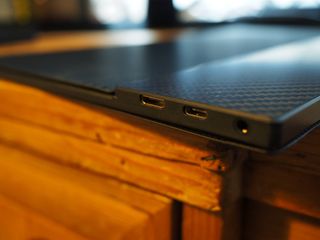
If your device does support USB-C, then it'll work for both power and data, which is very convenient with one of the modern Surface devices. Simply plug it in, and you're good to go.
The Vinpok Split has good maximum brightness and decent color reproduction, and while, obviously, it's nowhere near as sharp or vibrant as my Surface Book 2's 4K display, the experience isn't so jarring as it might be with a lesser display, when they're stacked side-by-side.
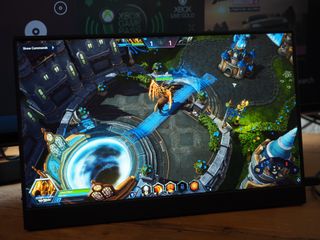
The Split also comes with a wide array of on-screen menu options, controlled via small buttons on the left side of the device. You can adjust all the obvious things, such as sharpness, brightness, and so on, and even throw in some power-saving modes if you're willing to take a hit on vibrancy for power efficiency.
Overall, the Vinpok Split looks great and sports decent construction and quality with a solid 1080p IPS display panel. But, as with most things, it's not perfect.
What I do not love about the Vinpok Split
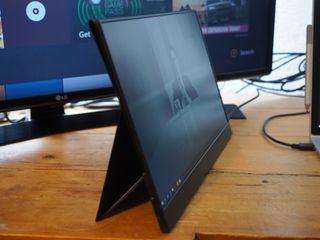
The Vinpok Split definitely feels like a "Version 1.0" product, with a range of features that could probably use some additional iteration. It should be noted, however, that the unit we have in is a pre-release version, so some of these issues could be solved when the product goes on sale in the coming weeks.
The "kickstand" cover, for example, could definitely use some work. It relies on a single thin strip of leather and on smooth surfaces it doesn't remain stable. A slight knock is enough to make it flop flat, which is annoying.
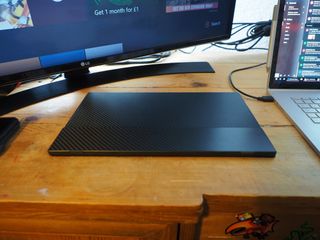
The viewing angles aren't very good either, which again probably isn't a huge issue since you can move the display to perfectly accommodate this fact. It also comes with some downward-firing speakers if you desperately need some external sound for some reason, but I'd say in almost every scenario, the speakers on your laptop are probably going to be better.
Finally, the touch experience is pretty poor. The responsiveness of touch events is slow, and additionally, I think the drivers could use an update, since the touch events become frozen if you're using the alternative display for a few moments, which can be a problem if you frequently switch between the two screens.
Should you buy the Vinpok Split?
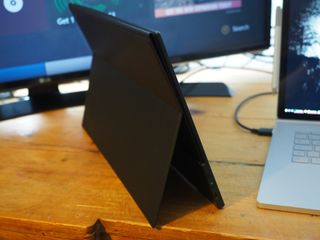
In terms of specs, you can get a cheaper display with better features quite easily, and I feel like $360 is a pretty big ask considering you can grab an entire Surface Go for a few extra dollars. The price point is quite easily the Vinpok Split's biggest drawback, making it really tough to recommend to most people.
That said, none of those affordable devices are truly portable, thin and light enough to slip into your laptop bag alongside an actual laptop, for a fully fledged portable work station. The fact you can hook this up to video game consoles, phones, and practically any contemporary laptop is also a boost for versatility too. But at that price point, you're going to want to really, really want a portable display, specifically.

Jez Corden is the Executive Editor at Windows Central, focusing primarily on all things Xbox and gaming. Jez is known for breaking exclusive news and analysis as relates to the Microsoft ecosystem while being powered by tea. Follow on Twitter (X) and Threads, and listen to his XB2 Podcast, all about, you guessed it, Xbox!
